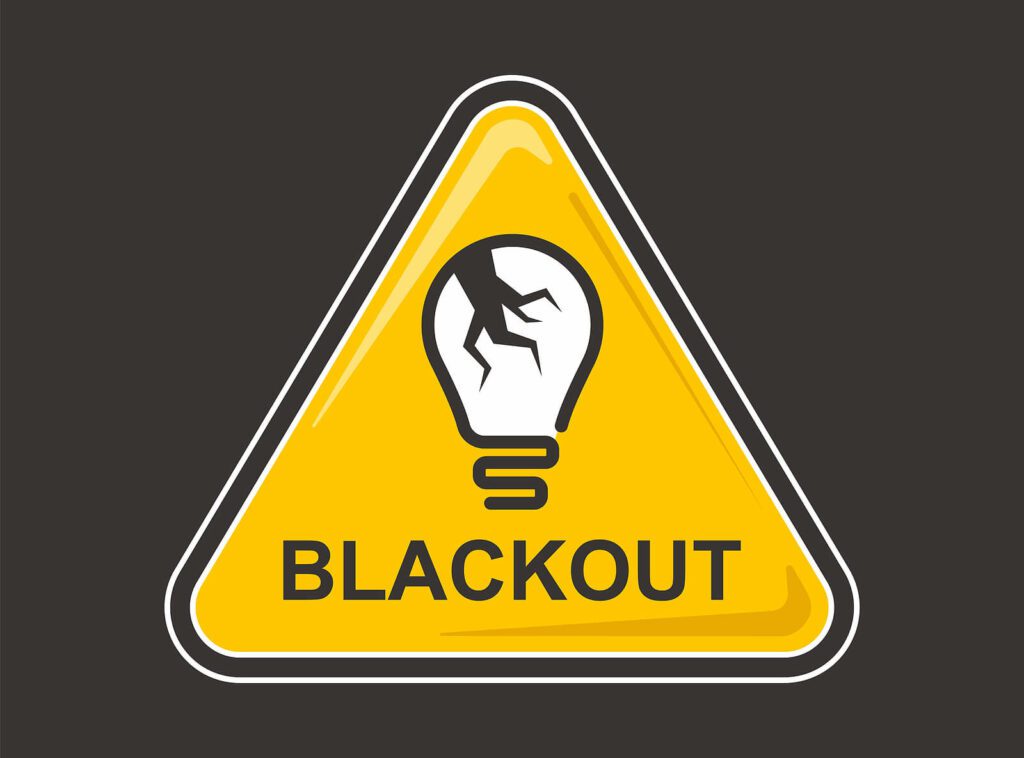We’ve all experienced disruptions in electricity. But not all power issues are the same. A spike in demand, extreme weather, a problem with the local power supply, or an electrical issue at home can cause a sudden outage. But sometimes the effects are different. To further clarify, we’ll illustrate the difference between a brownout vs. blackout.
Power Outages 101: Brownout vs. Blackout
What Is a Brownout?
A brownout is:
- A partial outage rather than a complete loss of power.
- An intentional or unintentional drop in electrical voltage.
- A voltage reduction typically between 10% and 25%.
- Often planned by a utility to prevent blackouts.
- Can help prevent an overload during a sudden rise in demand.
- May last from minutes to hours.
During a brownout, you’ll often notice lights dimming rather than turning off completely. Heating and lighting systems are typically not as affected as sensitive electronics, such as computer hard disk drives and electric motors. Most electrical and electronic products, however, tolerate normal fluctuations in voltage, which range from 115 to 125 volts.
What Is a Blackout?
A blackout is characterized as:
- An unexpected, complete loss of power across a utility’s service area.
- One event that can last for an indeterminate amount of time (minutes, hours, or days).
- Being caused by:
- Damage to a power line or transformer.
- A lightning strike to a power pole.
- Sudden spikes in demand.
- Frozen power lines.
- Tree branches falling on transmission lines.
- A disturbance affecting underground lines.
The nature and cause of the blackout determines the number of people affected. Fortunately, blackouts are rare even during times of high electrical demand, particularly in the summer.
Nonetheless, they can be triggered intentionally. Rolling blackouts are deliberate and enable utility companies to cope with peak power demands that the grid cannot safely handle. They can be implemented in specific service areasor spread across multiple locations to lessen the impacts.
While they can occur with little warning, rolling blackouts are generally planned in advance and often enable the power company to perform maintenance.
How to Protect Your Electrical System
You have no control over whether a brownout or blackout occurs. The good thing is most home electrical systems are protected by safeguards. Motors and other components typically monitor power levels and make the appropriate adjustments to avoid damage.
In fact, most modern home devices have built-in controllers to detect whether voltage is low or unbalanced.
In process-intensive environments, supply voltage monitoring , personnel training, and thermal protector and condition-monitoring device installation can ensure your facility is prepared for unexpected power fluctuations and disruptions.
What to Do in Either Situation
A blackout should be reported to your local utility company. Feel free to ask when they think service will be restored.
If you experience a brownout, check your electronics for anyissues. Contact the utility company to determine the source of the problem. If it’s not from the grid, you may have an electrical issue at home, so call an electrician right away. Such a situation can be an emergency, especially with bad wiring or other electrical failure.
*Sign up for email or text alerts so your utility can warn you of a potential brownout or blackout. You’ll be notified immediately, saving time and providing an opportunity to minimize the damage.
Contact Black Hills Inc. Home Services for Help
We provide 24/7 emergency electrical services in Olympia and surrounding areas. Knowing the difference between a brownout vs. blackout is important, but you may not know the cause if the power company doesn’t notify you. Fortunately, you can trust Black Hills to troubleshoot it, make repairs, and restore your electricity and safety. Call 888-978-2917 to schedule service right away.

